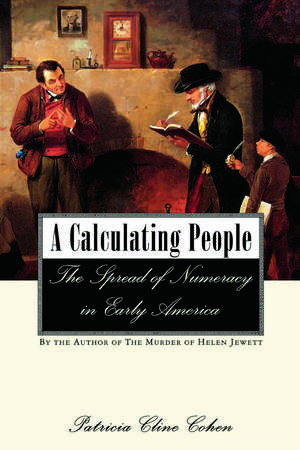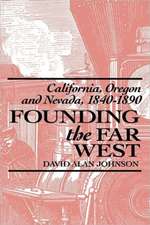A Calculating People: The Spread of Numeracy in Early America
Autor Patricia Cline Cohenen Limba Engleză Paperback – 3 noi 1999
| Toate formatele și edițiile | Preț | Express |
|---|---|---|
| Paperback (1) | 413.37 lei 6-8 săpt. | |
| Taylor & Francis – 3 noi 1999 | 413.37 lei 6-8 săpt. | |
| Hardback (1) | 1221.43 lei 6-8 săpt. | |
| Taylor & Francis – sep 2016 | 1221.43 lei 6-8 săpt. |
Preț: 413.37 lei
Nou
Puncte Express: 620
Preț estimativ în valută:
79.11€ • 82.29$ • 65.31£
79.11€ • 82.29$ • 65.31£
Carte tipărită la comandă
Livrare economică 15-29 aprilie
Preluare comenzi: 021 569.72.76
Specificații
ISBN-13: 9780415925785
ISBN-10: 0415925789
Pagini: 288
Dimensiuni: 152 x 229 x 18 mm
Greutate: 0.39 kg
Ediția:Revised
Editura: Taylor & Francis
Colecția Routledge
Locul publicării:Oxford, United Kingdom
ISBN-10: 0415925789
Pagini: 288
Dimensiuni: 152 x 229 x 18 mm
Greutate: 0.39 kg
Ediția:Revised
Editura: Taylor & Francis
Colecția Routledge
Locul publicării:Oxford, United Kingdom
Notă biografică
Patricia Cline Cohen is Professor of History at the University of California at Santa Barbara and author of The Murder of Helen Jewett: The Life and Death of a Prostitute in 19th Century New York (1998).
Recenzii
"[An] exceptionally well-crafted book...Illuminating and richly detailed." -- Paul Starr, The New Republic
"An important volume...This thoughtful, original, and felicitous book deserves a broad audience." -- Michael Kammen, Journal of American History
"A classic study...This elegant cultural history of how numbers became America's most powerful signs, both for reasoning and persuasion, is crucial for understanding the transformation of 19th-century America." -- Richard D. Brown, University of Connecticut
"An important volume...This thoughtful, original, and felicitous book deserves a broad audience." -- Michael Kammen, Journal of American History
"A classic study...This elegant cultural history of how numbers became America's most powerful signs, both for reasoning and persuasion, is crucial for understanding the transformation of 19th-century America." -- Richard D. Brown, University of Connecticut
Cuprins
AcknowledgmentsIntroduction1. Numeracy in Seventeenth-Century England2. Colonial Counting3. Patterns and Providence4. Republican Arithmetic5. Statistics and the State6. The Census of 1840 Conclusion Notes Index
















